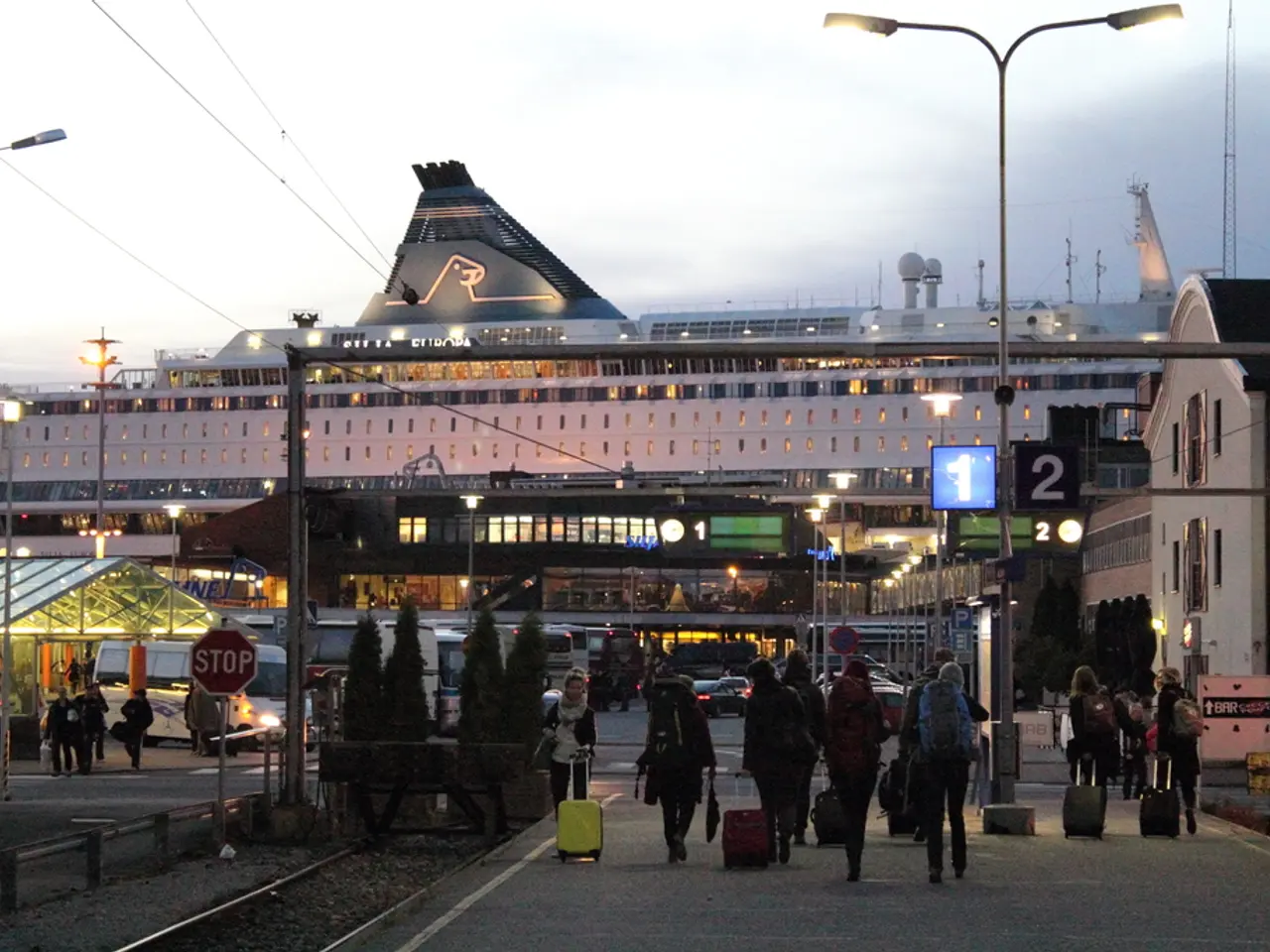Strangers Bring Misery to Local Residents: "This Place No Longer Feels like Home"
In the heart of Europe, several popular tourist destinations are grappling with the issue of overtourism. From the Alpine regions to historic castles, the influx of visitors is presenting unique challenges that require innovative solutions.
In Germany, the Nagelfluhkette nature park, nestled between Oberstdorf and the Lake Constance region, is one of the first institutions to experiment with ranger deployment. These rangers are hoped to address issues and gently guide guests to follow the rules, ensuring a harmonious coexistence between visitors and the natural environment.
Meanwhile, the Neuschwanstein castle, the fairytale castle of King Ludwig II, is experiencing damage from visitor masses. The castle administration is aiming to reduce the number of visitors to preserve this iconic landmark.
The historic mountain inn Aescher in the Swiss Alpstein Massif has faced similar issues after being designated as "the most beautiful place in the world" by National Geographic in 2015. Efforts are being made locally to regain control of the situation.
Artificial intelligence is seen as a potential solution for predicting crowded locations and suggesting alternative destinations to distribute tourists more evenly. The current discussion on introducing AI algorithms and IT to analyze tourist behavior and recommend alternative destinations aims to mitigate overtourism and peak congestion by personalizing travel suggestions. However, practical implementation is still developing, with a focus on digitalization investment challenges in hospitality.
Venice, prominently in the focus of the overtourism debate, has tightened visitor restrictions, requiring a more expensive entrance ticket on certain days. The target group of these restrictions are short-term visitors, who are seen as unpredictable compared to package tourists.
Enodsbach, a small village in Germany's Oberallgaeu, experiences an influx of day-trippers during sunny summer days, creating a festival-like atmosphere at the cozy mountain inn. Similar complaints of overcrowding are heard in Wasserburg, a village near Lake Constance, where parking becomes a problem on hot days.
Overcrowding is a common complaint on hiking trails in the Allgaeu Alps, with hikers frequently needing to jump out of the way for approaching cyclists. To address this, the Allgau High Alps Foundation has built an educational trail behind the Einoedsbacher mountain inn to guide hikers and educate them about local customs, flora, and fauna.
Ranger deployment is also being considered as a solution to address issues such as base jumping and drone flying in sensitive areas. Anti-tourism protests have been reported this summer in Barcelona, Mallorca, and the Catalan port metropolis.
Despite the challenges, many regions are seeing economically positive outcomes. The Oberallgaeu region had an economically positive outcome this year despite several rainy days. The Allgau High Alps Foundation, established by Manfred Kurrle, aims to promote nature conservation, preserve traditional alpine farming, and maintain local traditions.
Even the Vorarlberg hiking paradise of Bregenzerwald experiences frustratingly slow traffic on main roads during attractive excursion days. However, the Oberallgaeu region, a tourist hotspot, is reporting a high visitor level this year, with the number of overnight stays likely to end up at 2.5 million again. However, the exact number of annual visitors, including day-trippers, is unknown.
As the tourism industry continues to evolve, finding a balance between economic growth and environmental preservation will be key. The use of technology, ranger deployment, and community efforts are just a few of the strategies being explored to manage overtourism and ensure these treasured destinations can be enjoyed for generations to come.








